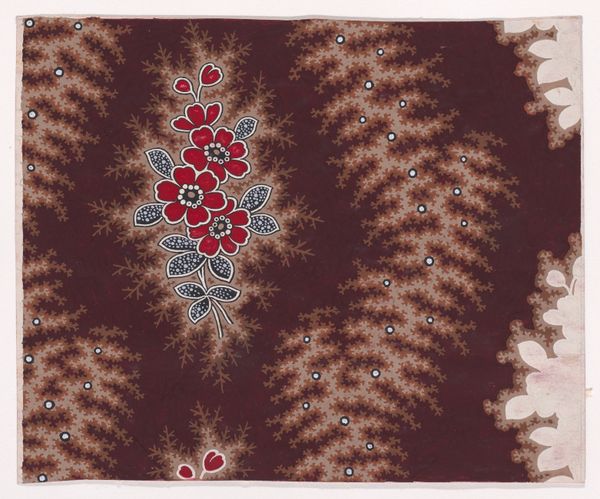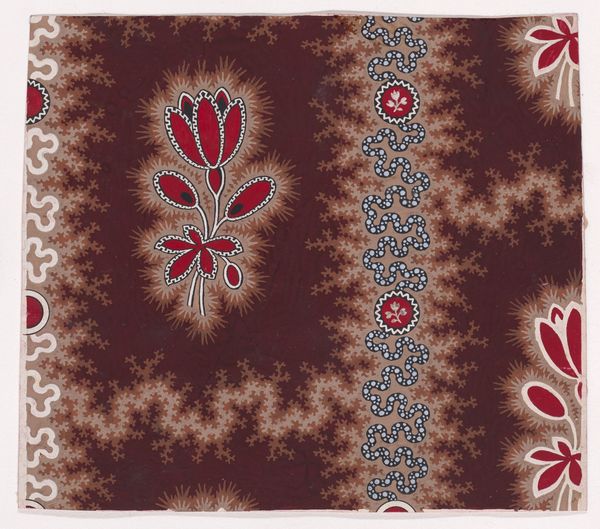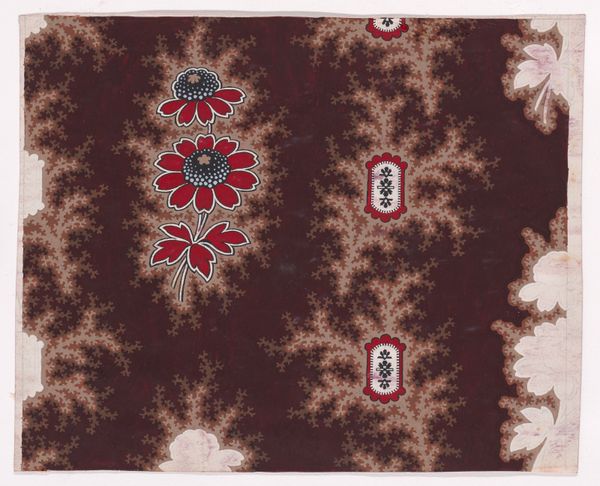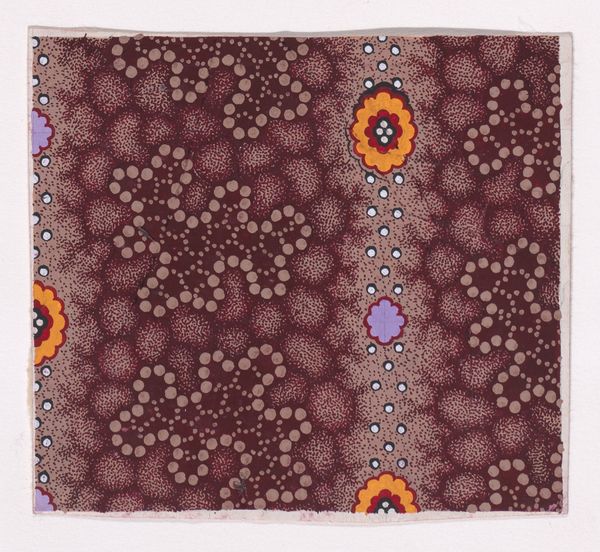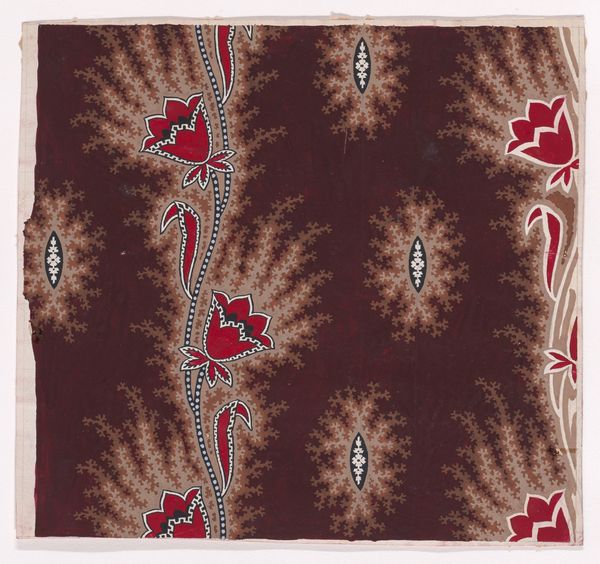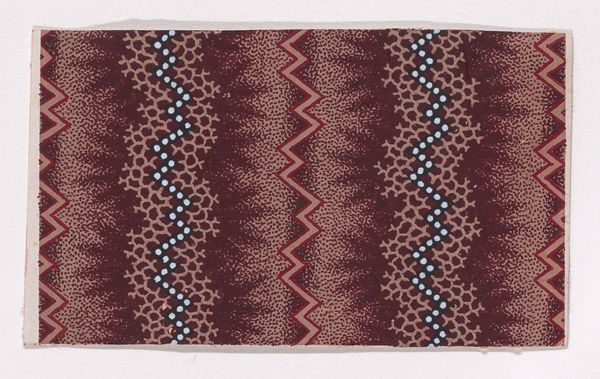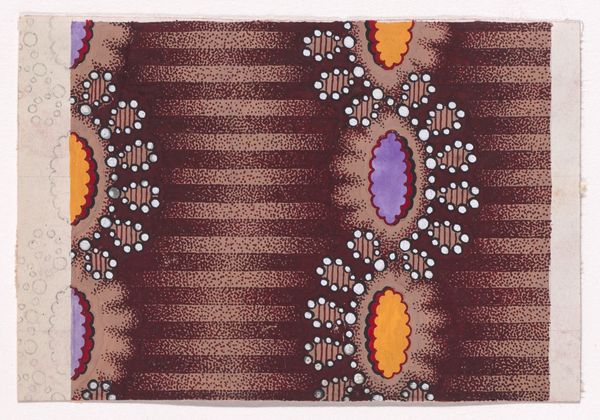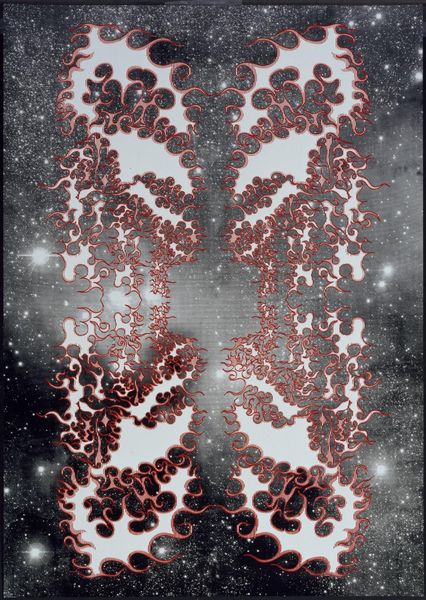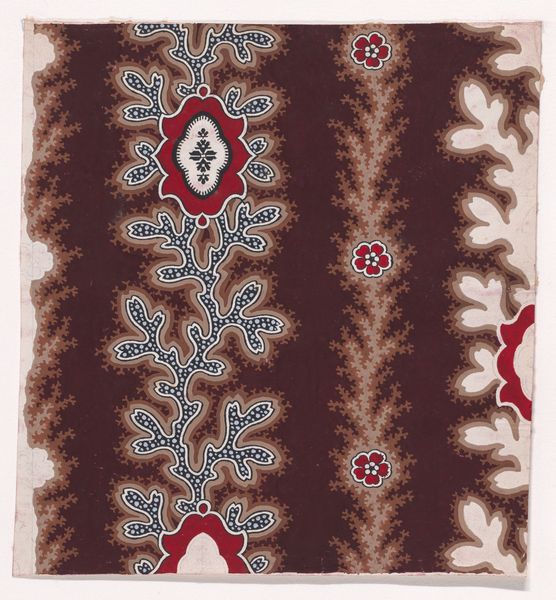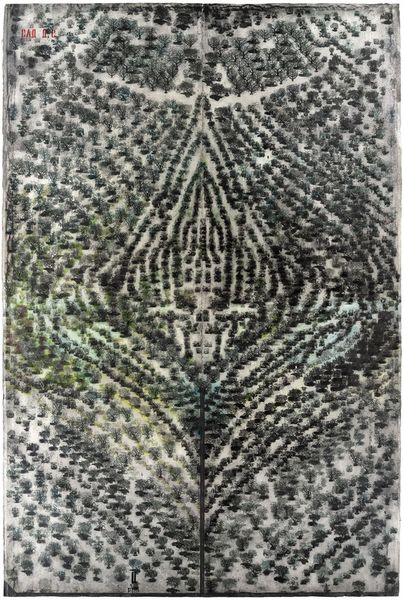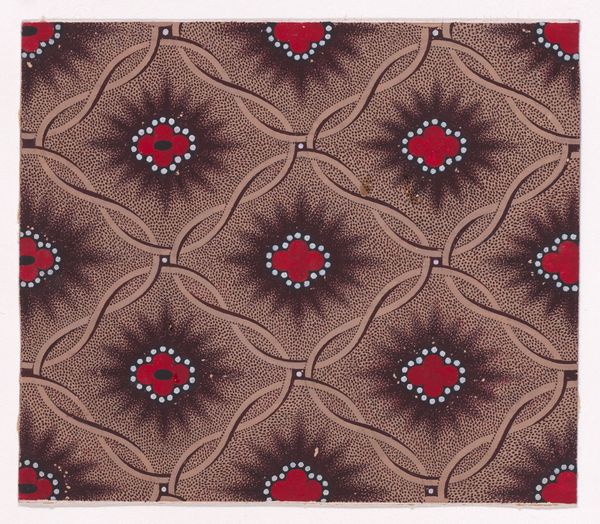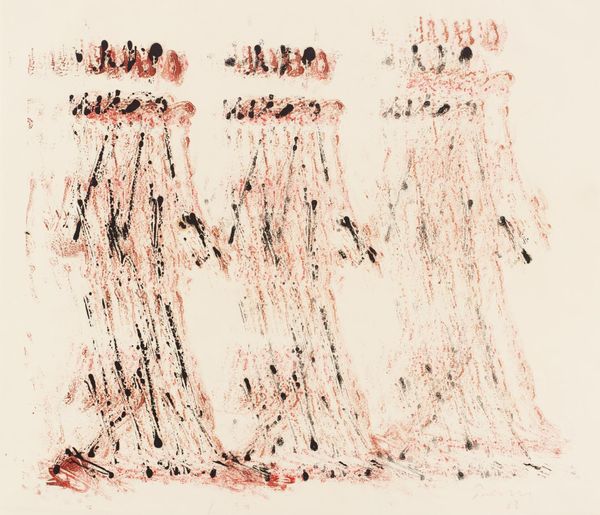
Textile Design with Alternating Vertical Strips of Stiff Branches and Rosettes with Flanks over Ornamental Frames 1840
0:00
0:00
drawing, print, textile
#
drawing
#
organic
# print
#
textile
#
organic pattern
#
textile design
#
decorative-art
#
imprinted textile
Dimensions: Sheet: 5 3/8 × 6 1/8 in. (13.6 × 15.5 cm)
Copyright: Public Domain
Curator: Let’s turn our attention to this textile design from around 1840, now held at the Metropolitan Museum of Art. It's described as "Textile Design with Alternating Vertical Strips of Stiff Branches and Rosettes with Flanks over Ornamental Frames," created by an anonymous hand. Editor: Immediately, the repetitive patterns grab me—almost overwhelming. I see dense, dark maroon juxtaposed with the stark, white-ish thorny branches. It makes me think about texture and labor involved in producing patterned textiles at that time. Curator: Exactly. It speaks to the broader fascination with pattern and decoration prominent at the time. Designs like this were immensely popular for furnishing homes and creating fashion textiles. The rise of industrial printing really shaped visual culture then. Editor: And I find it really interesting how nature is re-worked into rigid geometry. You've got this push and pull of the organic—branches and flowers— constrained in these strict vertical panels, speaking of mechanized production that attempts to reproduce, again and again, naturally variable shapes and forms. Curator: That's a wonderful point. It does reflect Romanticism's focus on the natural world but filters it through a very controlled, almost artificial lens which had significant social context.. It probably reflects the desire of a new industrialized population that craved these idyllic scenes even from the cities and towns where most manufacturing was happening at this moment. Editor: Think about the consumption aspect of this type of printed design; how accessible this could become to emerging bourgeois homes, not only in their dressings and textiles but reflecting aspiration in lifestyle, while it would certainly have employed legions of manual workers too, particularly women and children Curator: I agree completely. There's a hidden politics embedded in the accessibility and democratization of style. Editor: Indeed. Looking at this artwork helps understand the romantic tension between industry and craft. Curator: I appreciate how your eye brings attention to how this kind of design straddles elite artistry and accessibility to all. It gives a lot of clues as to how visual languages changed quickly with new socio-economic forces at play.
Comments
No comments
Be the first to comment and join the conversation on the ultimate creative platform.
